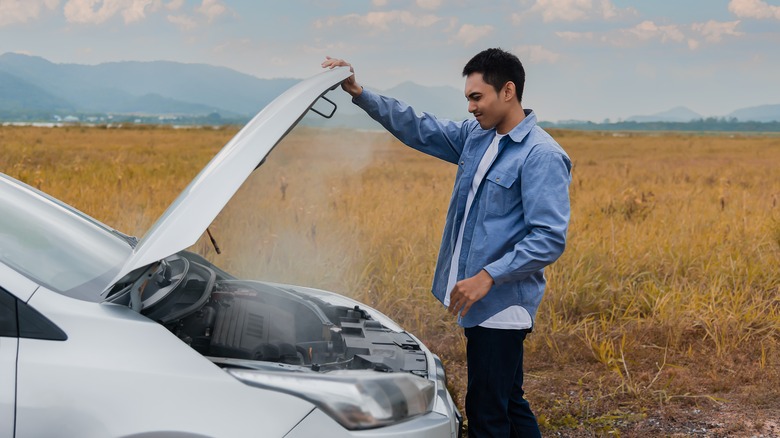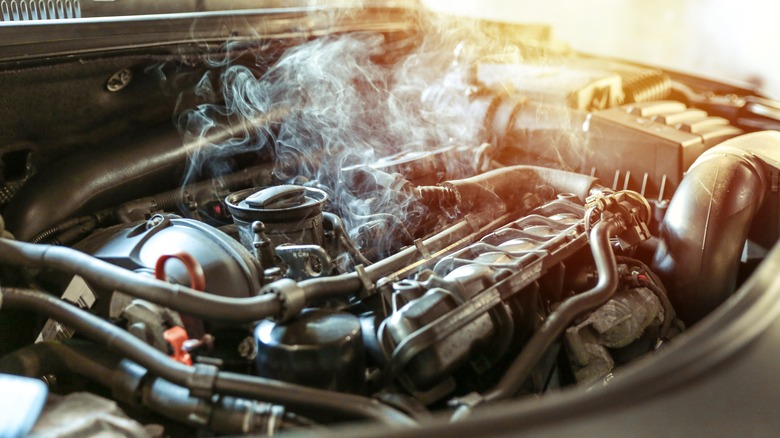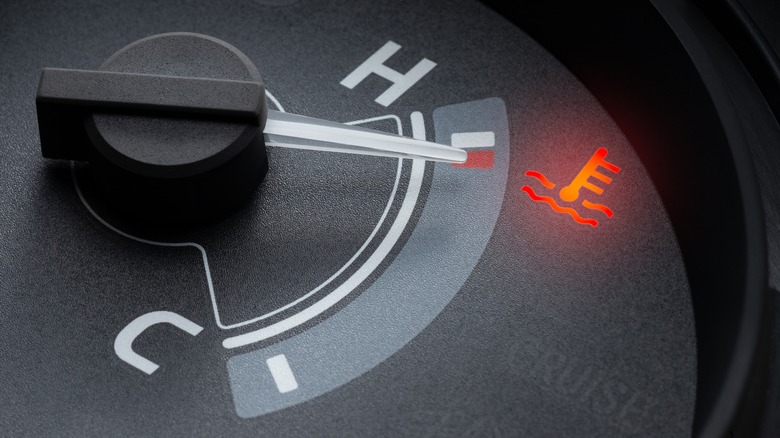Making This Radiator Mistake Can Easily Overheat Your Engine
One of the greatest dangers a driver can face is an engine overheat. It's a sad fate that can befall motorists at any time, and it can be incredibly damaging. This is why protective coolant is so very important: If the heat is allowed to build enough, you might even find the cylinder and pistons fuse. As such, it's vital to be aware of the different methods of mitigating the threat of engine overheats, as well as the seemingly-innocuous mistakes that can actually lead them to occur in the first place.
Take the radiator for instance. It has an enormous role to play in maintaining a safe temperature within a vehicle, and like many of its delicate components, cannot perform optimally if not regularly maintained. It's potentially even more harmful to improperly care for the radiator. One common error in this regard is topping up with just water, without adding any coolant.
Here's a look at why this is such an auto no-no, and what ICE drivers should be doing instead.
How can water be harmful to a vehicle's radiator?
Engine coolant ensures that your vehicle can better handle problematic extremes of temperature. The mixture is typically part water and part glycol, and it works by making its way to the inner workings of the engine and ensuring the heat's egress to the rest of the wider cooling system. It's smooth and efficient, providing that the driver is careful and consistent in topping up their coolant. What if a driver were to simply use water, though?
A coolant mixture also effectively increases the temperature range at which a vehicle can operate. Its boiling point is 223 Fahrenheit, and it will only freeze at an incredible -35 Fahrenheit. Both of these values are higher than the equivalent for plain water, making the latter inferior for the purpose. Not only that, but it can be outright dangerous: If water alone is cooling an engine, the owner will find their vehicle more prone to overheating, because it will be lost to the elements rather faster than a product specifically designed to regulate the engine's temperature.
Ice is a threat because it can damage the engine, and in the case of water lost to evaporation, the risk is potentially just as severe. Don Williamson Nissan warns, "any car without coolant will usually stop functioning within minutes, and it is ... likely ... you will need a complete engine replacement to be able to drive again."
The dangers of overheats and how to avoid them
This is why coolant should typically be used, and drivers should be especially vigilant for anything that indicates the supply of coolant to their vehicle has been compromised. Such signs can include a brightly-colored puddle beneath the vehicle or an increase in the internal temperature.
ICE drivers, then, should ensure they get themselves in the habit of regular coolant top-ups and changes as needed, just as they should with their engine oil. This oil can be another cause of overheats if neglected, as it has a similarly crucial function of keeping the engine's many complex components running smoothly.
An overheat won't necessarily always be catastrophic, as it's possible that on-the-ball drivers will notice the dangers in time. If they do, and can park safely to allow the engine to cool, they may yet save their engines from lasting harm. If not, sadly, they risk dangers as potentially debilitating as fused pistons, such as damaging the head gasket's seal. In short, coolant is just one more aspect of ICE ownership that drivers must remain on top of for proper vehicle maintenance.


